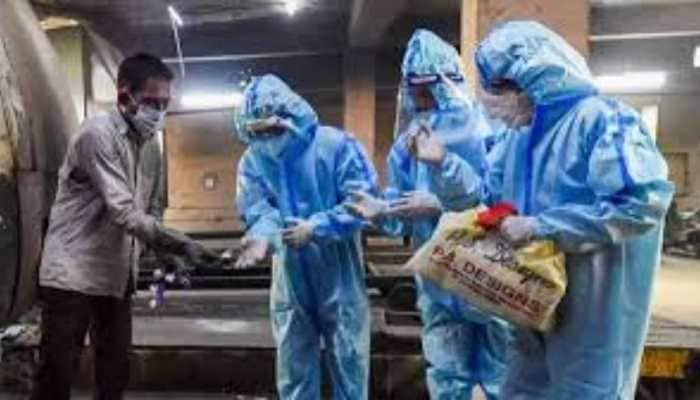Agencies
New Delhi, April 15:
The national capital on Wednesday (April 14) reported over 104 deaths, whereas the country reported 1,033 deaths due to COVID-19 infections, which was the highest since October 2020.
In Delhi, the number of cremations at its biggest crematorium, Nigambodh Ghat have gone up by at least 30 percent.
Mashqoor Rashid makes a grim projection as he oversees the burials of coronavirus victims’ bodies one after another at the city’s largest graveyard.
“At this rate, we will run short of land in a month,” he said at the Qabristan Ahle Islam near ITO. “Since last week, on an average 10-15 bodies of COVID victims are being buried daily here. Yesterday, 18 burials were performed,” he added.
Suman Gupta, the general secretary of Badi Panchayat Vaishya Beese Agarwal organisation that manages the city’s main crematorium at the Nigambodh Ghat, has an equally sobering number to share.
“Usually, around 50-60 cremations are performed here daily. The number has gone up to over 80 now,” he says.
With a sharp rise in deaths due to the latest surge in COVID-19, crematoriums and burial grounds in the city are struggling to manage resources.
As per the official figures, the virus has killed 409 people in Delhi in the first 13 days of April, while it had claimed 117 lives in the entire month of March and 57 in February.
This sudden rise in the fatality rate in the national capital has led to a rush of bodies at the city’s crematoriums and burial grounds.
Mashqoor Rashid, a member of the management committee of the graveyard at ITO, said the bodies of COVID-19 patients were being sent there from across the city as local cemeteries are getting overwhelmed.
However, Amantullah Khan, the chairman of Delhi Waqf Board which runs several graveyards in the city, said there was no scarcity of land for burials so far. “We have enough land for burials.”
North Delhi mayor Jai Prakash said he has written a letter to Chief Minister Arvind Kejriwal seeking his help for arranging land for burials.
“The burial of COVID-19 victims requires especially dug-up graves which are being prepared through backhoe loaders as the number of deaths are rising and the digging manually would take more time and manpower,” said a municipal corporation official, supervising the burials.
“As compared to normal graves of 4-5 feet deep, the COVID-19 victims require to be buried 12-14 feet deep. Such graves can also not be reused due to the highly infectious nature of the virus,” he added.
The national capital had on Wednesday recorded the highest-ever spike of over 17,000 COVID-19 cases and 81 deaths due to the infection, giving it the dubious distinction of being the worst affected city in the county.
“The cremations of over 100 COVID-19 victims were performed in the last five days. On Tuesday, 33 bodies were cremated. We have prepared specially barricaded coronavirus blocs where 22 platforms are being used for last rites. If needed more platforms will be added to it,” Suman Gupta of the Badi Panchayat Vaishya Beese Agarwal organisation that manages it said.
Around 70 staff of the cremation ground are working hard to cope with the rush of bodies.
All the staff of Nigambodh Ghat have been administered COVID-19 vaccine and provided with necessary items to save themselves from the infection, he added.
Meanwhile, the Directorate General of Health Services (DGHS) mentioned that cases involving respiratory distress requiring mechanical ventilation should be admitted to a dedicated COVID-19 hospital.
Additionally, the Directorate General of Health Services also stated that as per the reports, the hospitals are admitting mild and moderate cases of COVID-19 which are not in line with the prescribed admission protocol.




